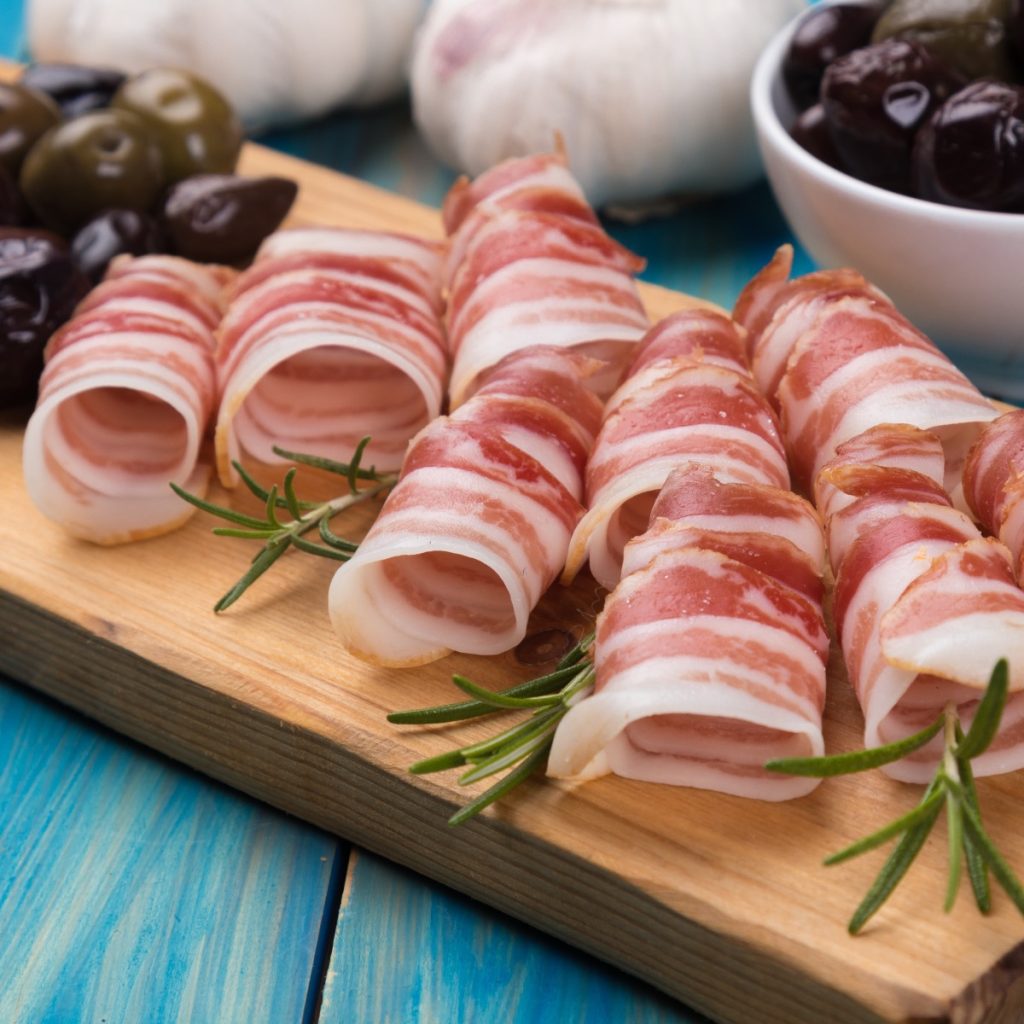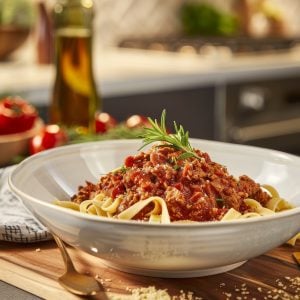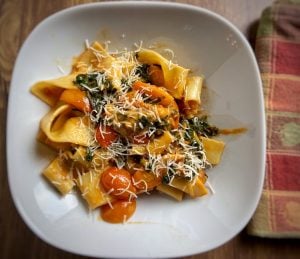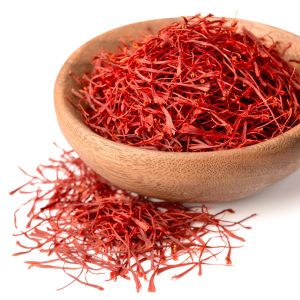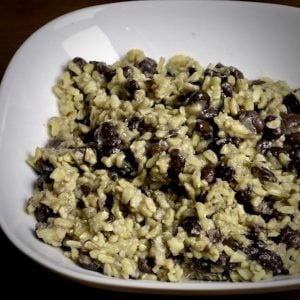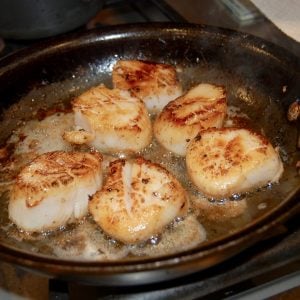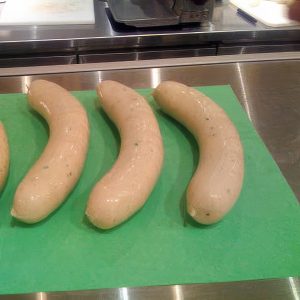All About Pancetta and How to Cook with It
We don’t cook with or serve pancetta often, but it is a treat when we do. There are some recipes like carbonara sauce that require it, and then I will look for it at our local market.
Pancetta is an Italian bacon made from pork belly that has been salt-cured and seasoned with various herbs and spices. It is a popular ingredient in Italian cuisine, known for its rich, savory flavor and versatility in cooking.
How Is It Made?
Traditionally, pancetta is made by rubbing a pork belly with salt, black pepper, and other spices such as juniper berries, nutmeg, or garlic. The meat is then rolled up and tied with string before being hung to dry for several weeks. The curing process gives pancetta its distinctive flavor, which is less smoky and more concentrated than American-style bacon.
It can be used in a variety of ways in the kitchen. It is often used to add depth of flavor to pasta dishes, soups, and stews or as a topping for pizza or salad. It can also be sliced thin and eaten as cured meat, like prosciutto.
One of the most popular ways to use it is in carbonara sauce, a classic Italian pasta dish made with eggs, cheese, and pancetta. The fat from the pancetta is rendered and used to cook the eggs, creating a creamy, rich sauce that coats the pasta.
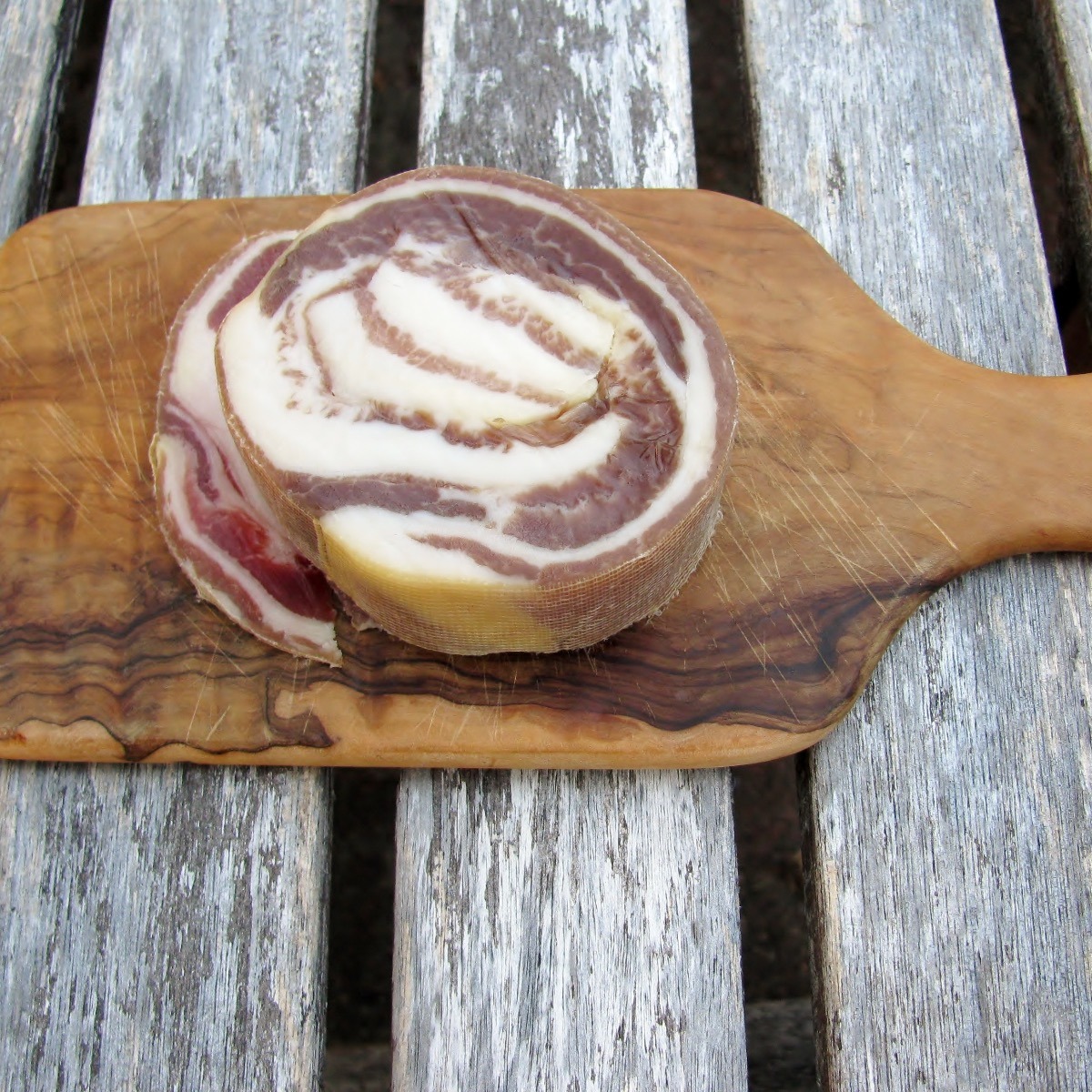
What Does It Taste Like?
Pancetta has a rich, savory, and slightly salty flavor from the curing process. The taste is often described as more complex than bacon’s, with a deeper umami flavor.
The meat itself is tender and slightly fatty, with a melt-in-your-mouth texture. Depending on the specific recipe, the spices used in the curing process can also add additional flavors, such as garlic, thyme, or black pepper. As a result, it has a distinctive taste that can enhance the flavor of a wide range of dishes, from pasta to soups to sandwiches.
Caution
While pancetta is a delicious and versatile ingredient, it is also high in fat and sodium. Therefore, as with any cured meat, it should be consumed in moderation as part of a balanced diet. Additionally, pregnant women and individuals with certain medical conditions should avoid consuming raw or undercooked pancetta due to the risk of foodborne illness.
What Are the Different Types of Pancetta?
There are several types of pancetta, each with a unique flavor and texture. Here are some of the most common varieties:
- Pancetta Tesa: This is the most common type. It is made by rubbing pork belly with a mixture of salt, pepper, and other spices before rolling and tying it to dry.
- Pancetta Arrotolata: Rolled and tied into a cylinder before being cured, giving it a round shape and slightly different texture.
- Pancetta Steccata: Cured and then cut into thin slices stacked on top of each other to form a block, which is then dried and sliced as needed.
- Pancetta Affumicata: A smoked version, cured like regular pancetta but then smoked over wood chips for several hours to add a smoky flavor.
- Pancetta Piacentina: Made in the Piacenza region of Italy, and is known for its distinct flavor and texture, which is slightly more tender than other varieties.
- Pancetta di Calabria: Made in the Calabria region of Italy, and is seasoned with hot peppers and other spices, giving it a spicy kick.
These are just a few examples of the different types of pancetta available, and each region of Italy may have unique variations on this classic ingredient.
Why Is It So Expensive?
Pancetta can be more expensive than other types of bacon because of the ingredients and process used to make it.
- The pork used is often higher quality than the pork used for regular bacon. It may come from specific breeds of pigs or be sourced from certain regions with strict regulations on animal welfare and feeding practices.
- The process of making it is more time-consuming and labor-intensive than that of regular bacon. First, the pork belly is rubbed with a mixture of salt and spices, then rolled and tied before being hung to dry for several weeks. This curing process takes time and requires attention to detail to ensure the pancetta is correctly seasoned and has the desired texture and flavor.
- Because pancetta is a specialty ingredient often imported from Italy, it may be subject to additional costs for transportation, import fees, and taxes, which can add to the overall price.
- Finally, like any food product, the price of pancetta is also influenced by supply and demand. Therefore, the price may increase if demand for pancetta is high and supply is low.
How Are Pancetta and Bacon Different?
Pancetta and bacon are both types of cured pork, but they differ in several key ways.
- The cut of meat used to make them is different. Bacon is typically made from pork belly, while pancetta is made from the same cut but is usually rolled and tied before curing.
- The curing process for pancetta is different from that of bacon. Pancetta is usually cured with salt, black pepper, and other spices, while bacon is often cured with salt, sugar, or maple syrup. This gives the two types of meat slightly different flavors and textures.
- The way they are cooked and served can also differ. For example, bacon is often fried or baked until crispy and served as a breakfast food or used as a topping for sandwiches or salads. On the other hand, pancetta is usually sliced thin and used as an ingredient in pasta dishes, soups, and stews or eaten as cured meat, much like prosciutto.
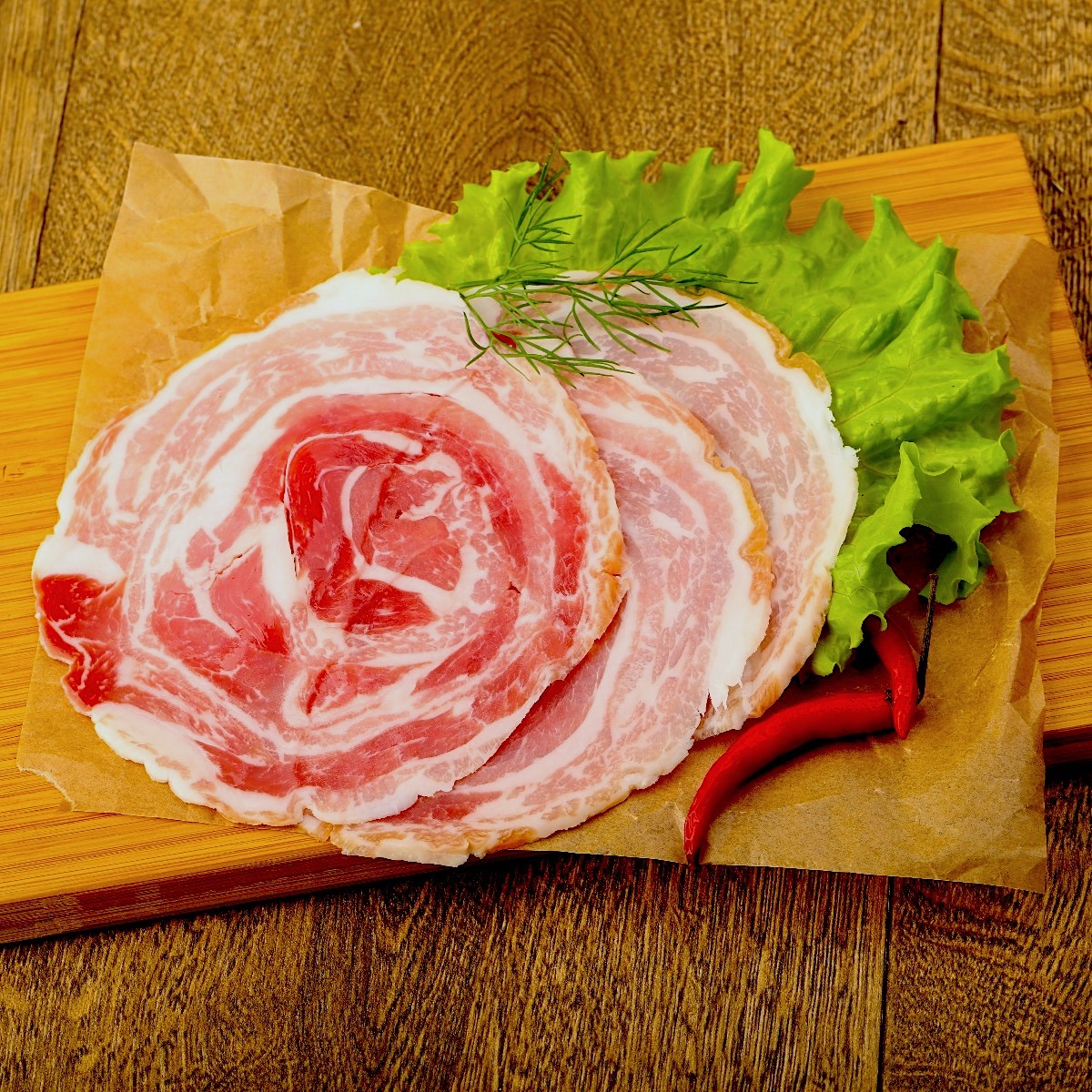
What Are Some Ways to Cook With It?
Pancetta is a flavorful and versatile ingredient that can be used in various ways in cooking. Here are some popular ways to use pancetta:
- In Pasta: It can be used in a classic Carbonara sauce, made with eggs, cheese, and pancetta, or added to other pasta dishes for a rich, savory flavor.
- In Soups and Stews: Used to add depth of flavor to soups and stews. It pairs well with vegetables like onions, carrots, and celery and can add a savory note to bean or lentil dishes.
- As a Topping: Perfect as a topping for pizza or salads, thinly sliced pancetta can be cooked until crispy and used instead of bacon bits to add crunch and flavor to salads.
- In Appetizers: Perfect for savory appetizers like pancetta-wrapped dates or asparagus. It can also be added to cheese boards for a salty, cured meat option.
- In Sandwiches: An excellent substitute for bacon in sandwiches for a richer, more savory flavor. It pairs well with other sandwich ingredients like lettuce, tomato, and avocado.
Where Should I Buy Pancetta?
Pancetta can be found at most grocery stores, specialty food stores, and Italian markets. When shopping for it, choosing a high-quality product is important to ensure the best flavor and texture. Here are some tips for where to buy pancetta:
- Specialty Food Stores: Stores specializing in high-quality and artisanal food products are a great place to find it. They often carry various brands and types of pancetta, so you can choose the one that best suits your needs.
- Italian Markets: Italian markets are a great place to find authentic pancetta, a popular ingredient in Italian cuisine. These markets may also carry other Italian cured meats, cheeses, and other specialty products that pair well with pancetta.
- Online Retailers: Many online retailers specialize in high-quality food products and can ship pancetta directly to your door. This can be a convenient option if you live in an area without easy access to specialty food stores or Italian markets.
- Local Butchers: Some local butchers may also carry pancetta, especially those specializing in Italian or Mediterranean-style meats. They may also be able to provide recommendations for how to use pancetta in your cooking.
When buying pancetta, looking for a high-quality product that is well-cured and has a good balance of fat and meat is essential. By shopping at specialty food stores, Italian markets, online retailers, or local butchers, you can find the best pancetta for your cooking needs.
What Can You Substitute for It?
If you don’t have pancetta on hand, a few ingredients can be used as a substitute, depending on the recipe you are making. Here are some options:
- Bacon: Pancetta is a type of cured pork, so bacon is a popular substitute. While the flavors are different, bacon can be used instead of pancetta in many recipes. However, remember that bacon is often saltier than pancetta, so you may need to adjust the amount of salt in the recipe accordingly.
- Prosciutto: Prosciutto is another type of cured Italian pork that can substitute for pancetta. Like pancetta, prosciutto has a rich, savory flavor and can be used in various dishes. However, prosciutto is often sliced thin and used as cured meat rather than cooked like pancetta, so consider this when substituting.
- Ham: Diced ham can be used instead if you need a substitute for pancetta in a recipe like a quiche or a frittata. While the flavor is not the same as pancetta, it can add a similar salty, savory note to the dish.
What Are Some Classic Recipes Featuring Pancetta?
- Spaghetti alla Carbonara: One of the most classic pasta dishes in Italian cuisine, spaghetti alla carbonara is made with pancetta, eggs, and cheese. The pancetta is cooked until crispy and then combined with eggs, cheese, and black pepper to make a rich, creamy sauce for the pasta.
- Risotto alla Milanese: This classic Italian rice dish is made with Arborio rice, saffron, and pancetta. The pancetta is cooked until crispy and added to the risotto with onions, garlic, and chicken broth. The saffron adds a rich, earthy flavor and a bright yellow color to the dish.
- French Onion Soup: This classic soup is made with caramelized onions, beef broth, and pancetta. The pancetta adds a salty, savory note to the soup and complements the sweetness of the caramelized onions. The soup is topped with toasted bread and melted Gruyere cheese.
- Quiche Lorraine: This classic French dish has eggs, cream, cheese, and pancetta. The pancetta is cooked until crispy and then combined with eggs and cream to make a custard-like filling for the quiche. The dish is typically served for breakfast or brunch.
- Arugula and Pancetta Pizza is a thin crust topped with arugula, pancetta, and mozzarella cheese. The pancetta is cooked until crispy and then sprinkled over the pizza with the arugula and cheese. The flavors are savory and slightly bitter, making for a delicious and satisfying pizza.

